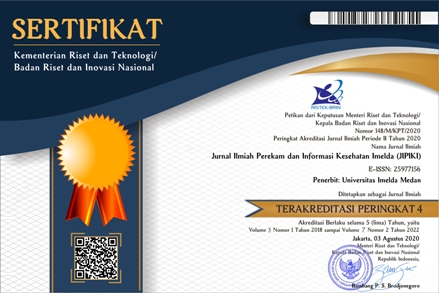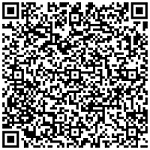Implementasi Teknologi V`Oice Recognition Dalam Dokumentasi Elektronic Health Record (EHR): Studi Kasus Implementasi Sistem Informasi Klinik Bunda Medical Center Pekan Baru
DOI:
https://doi.org/10.52943/jipiki.v10i2.1953Keywords:
Voice Recognition, Electronic Health Record, Digital Transformation of HealthAbstract
Digital transformation in healthcare services demands efficiency and accuracy in patient medical record documentation. One promising innovation is the implementation of voice recognition technology to support the automatic recording of medical data. This study aims to design and implement a voice recognition system within the Electronic Health Record (EHR) application at Klinik Bunda Medical Center in Pekanbaru. The research was conducted from May to July 2025, involving 15 active healthcare professionals as the primary users of the system. The method used was a software engineering approach employing the Rapid Application Development (RAD) model, which included interface design, voice recording feature integration, and limited user testing. The implementation results showed a significant improvement in documentation efficiency, with the average documentation time reduced from 6–8 minutes to 4–6 minutes. Additionally, the completeness of SOAP data increased from 73% to 90%. Most healthcare professionals stated that the system made it easier for them to document data without interrupting patient interaction. However, several challenges were identified, such as reduced accuracy in noisy environments and limitations in recognizing local medical vocabulary. In conclusion, the voice recognition system can be effectively applied to improve the quality of medical record documentation at the clinic level, provided that there is adequate infrastructure support, user training, and continuous evaluation. These findings are expected to serve as a foundation for developing similar systems in other healthcare facilities to accelerate the digitalization of health services in Indonesia.
Downloads
References
et al. Kumar, S., “Voice recognition technology in healthcare: A systematic review,” J. Med. Syst., vol. 1, no. 44, pp. 1–10, 2020.
D. Fatima, A., Wibisono, S., & Zulfikar, “Analisis kesiapan fasilitas kesehatan dalam implementasi rekam medis elektronik di Indonesia,” J. Sist. Inf. Kesehat. Indones., vol. 10, no. 1, pp. 45–53, 2022.
World Health Organization (WHO), “Digital Health: A Strategy for the WHO,” WHO Publications, 2021.
et al. Bates, D. W., Cohen, M., Leape, L. L., “Reducing the frequency of errors in medicine using information technology,” J. Am. Med. Informatics Assoc., vol. 1, no. 25, pp. 1–7, 2022.
et al. Hsiao, C. J., “Electronic health record systems and the quality of care: A systematic review,” Health Aff., vol. 1, no. 38, pp. 1–10, 2022.
E. P. Widodo, S. A., & Sari, “Tantangan implementasi EHR di fasilitas kesehatan primer di Indonesia. Jurnal Informatika Kesehatan Indonesia,” J. Inform. Kesehat. Indones., vol. 8, no. 1, pp. 20–28, 2020.
A. Buchan, J., Duffield, C., & Jordan, “‘The impact of technology on nursing: A systematic review,’” Int. Nurs. Rev., vol. 1, no. 67, pp. 1–10, 2020.
et al. Gagnon, M. P., “The impact of health information technology on the quality of care: A systematic review,” Int. J. Med. Inform., vol. 1, no. 129, pp. 1–10, 2021.
Kemenkes RI, “Peta Jalan Transformasi Digital Kesehatan Indonesia 2021–2024,” Kementerian Kesehatan Republik Indonesia.
A. H. Ramadhan, R., Siregar, R., & Nasution, “Analisis kesiapan digitalisasi sistem informasi di Puskesmas,” J. Teknol. Kesehat., vol. 11, no. 2, pp. 101–108, 2021.
Downloads
Published
How to Cite
Issue
Section
License
Copyright (c) 2025 Jurnal Ilmiah Perekam dan Informasi Kesehatan Imelda (JIPIKI)

This work is licensed under a Creative Commons Attribution-ShareAlike 4.0 International License.










